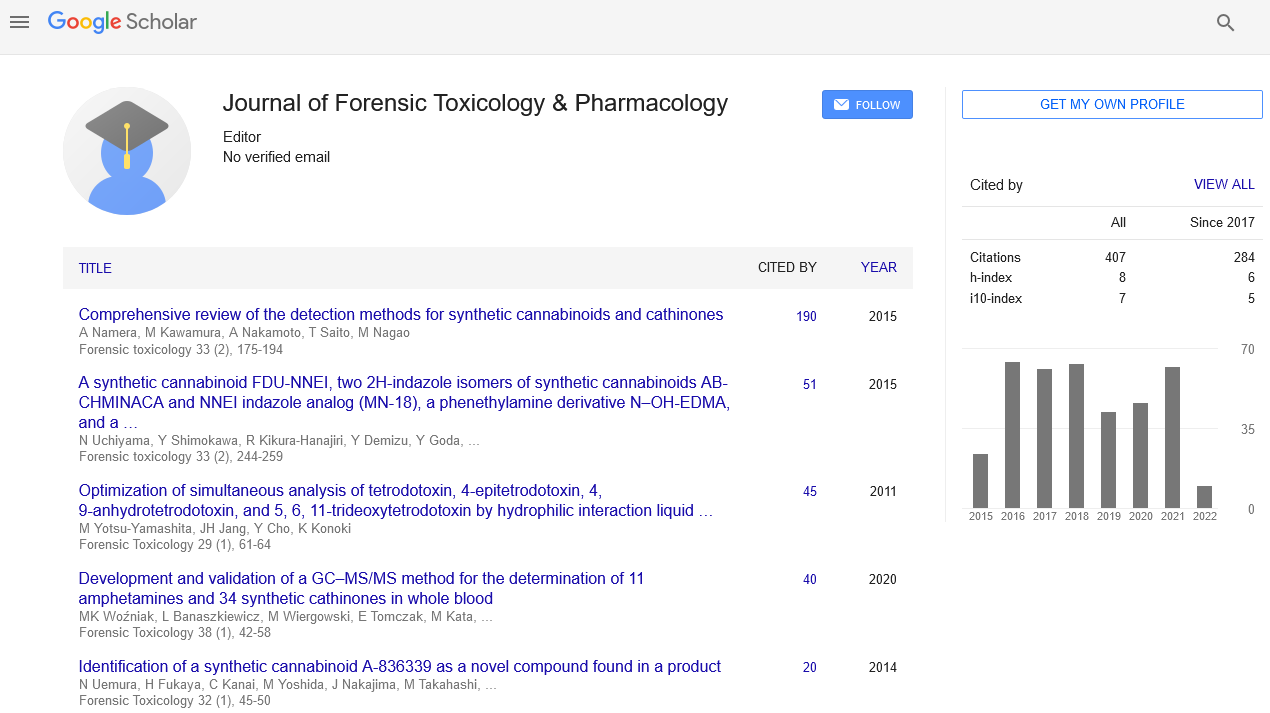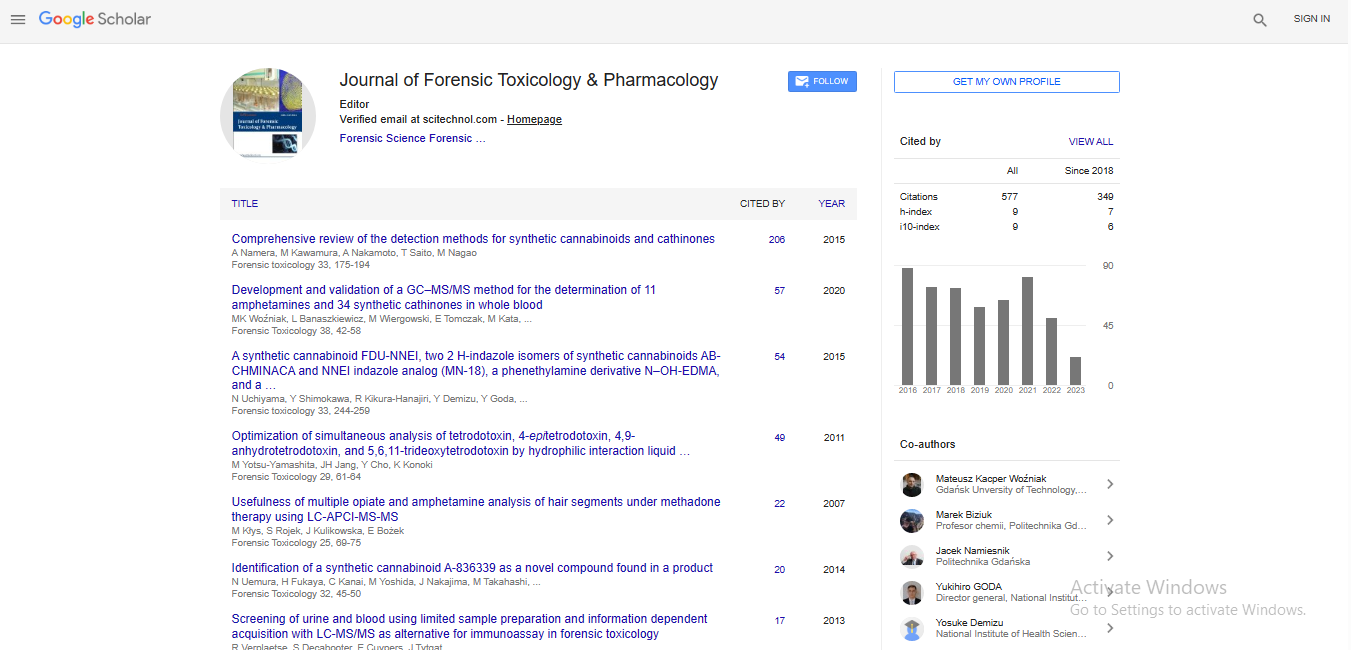Passive biosorption of heavy metal ions to plant-derived materials: Investigations of responsible chemical interactions
Gary D Rayuson
New Mexico State University, USA
: J Forensic Toxicol Pharmacol
Abstract
Biosorption of toxic heavy metal ions by plant materials exhibits many desirable characteristics as a potential solution to their removal from contaminated water. Inherent selectivity of these materials for removal of pollutants in the presence of benign metal ions offer significant advantage relative to commercially synthesized sorbents. Unfortunately, the chemical complexity exhibited by these biogenic materials can be problematic for their implementation. To gain an understanding of the fundamental chemical interactions responsible for the binding of selective transition and lanthanide metal ions, we have utilized an arsenal of techniques to study their biosorption. We have selected for these studies materials derived from the plant Datura innoxia. Because of the chemical complexity of this material, multiple orthogonal probes have been applied to study metal ion biosorption to these materials. These probes have included both spectroscopic techniques and derivation of thermodynamic parameters. Earlier work identified carboxylate moieties as primarily responsible for metal ions sorption. These chemical interactions were found to involve both formation of surface complexes and the involvement of electrostatic attraction to the negatively charge biomaterial. These studies were expanded to include variations in tissue types from both the sample and different plant species. The impact of these findings on the potential of biosorbents for contaminated water treatment will be discussed.
Biography
E-mail: gdrayson@nmsu.edu
 Spanish
Spanish  Chinese
Chinese  Russian
Russian  German
German  French
French  Japanese
Japanese  Portuguese
Portuguese  Hindi
Hindi 
